Snake plants are among the most popular houseplants to have indoors…
They don’t only come in different shapes and sizes…
… but they also are very easy to propagate and multiply.
Hear it from Winston!
My snake plants are like my babies – they’ve been in every desk I own at home…
Well, not every snake plant I have can be put there, but the small ones…
They’re effortlessly super chill and stunning, that’s why I love them…
Also, they don’t require a lot of maintenance…
So I just put them there and look over once in a while if they need it…
Just the perfect houseplant!
If you’re here to have yourself a beautiful desk decor…
You’re in the right place! Read on to find out more on these mini snake plant varieties…
Mini Snake Plants
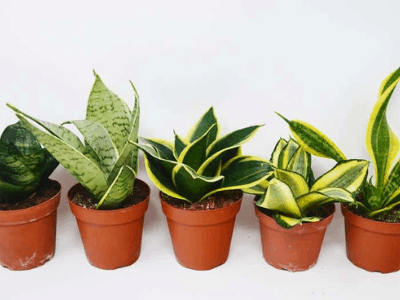
Sansevieria or snake plants belong to the genus Dracaena, and can be grown indoors or outdoors…
Snake plants are hardy plants that can be grown anywhere…
The Sansevieria genus of flowering plants contains over 70 different species…
These species come in a variety of sizes and forms…
There are some Sansevieria that can grow taller than a person…
… up to 7 feet tall, while others can grow no taller than a foot.
In this post I will introduce some shorter Sansevieria types…
You can grow one of these easy-care snake plants in your home or office…
.. if you prefer a plant that can fit in a small space and is easy to care for.
When grown indoors, snake plants make excellent ornamental plants…
… due to their small size, you can grow them in small pots, dish gardens, and as tabletop decors.
You can also use them in window sills or on the wall shelves along with other smaller succulents…
You really need to know about this.
Sansevieria Trifasciata Hahnii
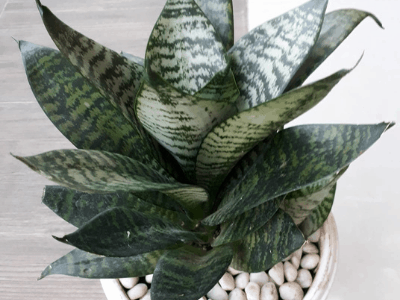
A short snake plant called Sansevieria Hahnii is one of the most common species of this beautiful plant.
Other common local names for this plant include Birds nest snake plant or Dwarf Mother-in-law’s tongue.
One of its characteristics is its stemlessness.
Sansevieria Trifasciata is among the world’s most famous snake plants.
As a short cultivar, the bird’s nest plant rarely grows over a foot (30 cm) tall.
However, if you grow them outdoors, they tend to spread rapidly through their underground stems.
The foliage of the evergreen Sansevieria bird’s nest snake plant is grown.
When it is overcrowded or stressed, it will often send out a stalk of small..,
…inconspicuous, but highly fragrant greenish/white, tan, or yellow flowers.
Most Sansevieria flowers are sterile, producing orange berries but no seeds.
Care and Maintenance
Place Sansevierias in filtered or moderately bright light.
A good spot would be in front of a north-facing window or in front of a bright,..
..sunny window that is covered by a sheer curtain.
Although the plant can tolerate low light, bright light enhances the colors in the leaves.
Intense light, on the other hand, may cause the edges of the leaves to turn yellow.
Allow the soil to completely dry before watering, and then..
..water thoroughly until water drips through the drainage hole.
Allow the pot to drain before discarding the remaining water in the saucer.
Never let the soil become soggy, and never leave the pot submerged in water.
Throughout the winter, water sparingly.
Like most succulent plants that store water in their leaves, Sansevieria rots quickly in wet soil.
Place Sansevieria in a room with average temperatures.
Protect the plant from drafts and cold temperatures, as temperatures below 50 °F (10 °C) cause damage.
Throughout the summer, feed the plant once every three weeks.
Dilute a general-purpose fertilizer for houseplants to one-half..
…the strength recommended on the container.
Sansevieria is a light feeder, and overfeeding causes the leaves to fall over.
Onto the next one!
Sansevieria Trifasciata Golden Hahnii
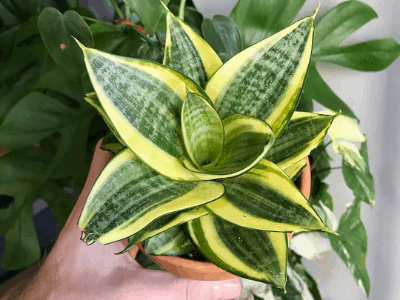
The buttery yellow leaves of Sansevieria Golden Hahnii are accented with green stripes.
The golden hahnii snake plant was patented in 1941 and given to a botanist only known as Hahn.
It has been given several scientific names over the years,..
…including Sansevieria craigii, Sansevieria jacquinii, and Sansevieria laurentii.
Its cultivar name, ‘Golden Hahnii,’ inspired the alternate common name gold hahnii..,
…and it’s also known as: Bird’s nest sansevieria, Bird’s nest snake plant..,
…Dwarf mother in law’s tongue, and Good luck plant.
This Asparagaceae family member is an air purifier, making it both functional and attractive.
It has a unique place among sansevierias.
Most dwarf snake plants that have followed are descended from this New Orleans-based dwarf species.
While this species is not technically a perennial, it can be grown in…
…Arizona, Florida, and other similarly hot states.
Care and Maintenance
This dwarf snake plant is only 6 to 8 inches tall and 6 inches across.
It’s a great option for groundcover or smaller apartments.
It can reach 12 inches in ideal conditions and as little as 3 inches in poor conditions.
Depending on the amount of light, the variegated foliage ranges from…
…light yellow with vertical green stripes to grey-green with dark…
…green bands and a creamy yellow margin.
These leaves form a tight rosette that resembles a cross between…
…a rose and a bird’s nest, lending to one of its names and occasionally…
…leading to it being misidentified as a bromeliad.
‘Gold Hahnii’ prefers bright, indirect light or direct sunlight.
The amount of light has a direct impact on its variegation.
More light means a more appealing display.
It will, however, tolerate low light conditions at the expense of vibrancy and size.
Gold hahnii grows best in USDA hardiness zones 10-11, but it can also…
…be grown indoors in temperatures ranging from 60° to 73° Fahrenheit.
Bird Nest is said to tolerate outdoor cultivation in Zone 9 by some owners.
It can only survive for short periods of time when exposed to temperatures around 50°F.
This plant prefers a moderately humid environment, but it will tolerate normal household humidity levels.
Keep it away from vents and other drafts, and provide…
…it with a water dish if you believe it isn’t getting enough moisture from the air.
Misting this plant is not recommended because it causes water spots on the foliage.
This succulent only requires watering when the soil becomes completely dry..,
…which is about every 14 days.
Allow the plant to drain after thoroughly watering it.
This plant does not need fertilizer, but you can give it a small dose…
…of general fertilizer in the spring and mid-summer.
To remove dust, give your dwarf snake plant a gentle wipe-down with…
…a damp paper towel on a regular basis.
Remove any flower spikes after their blooms have died and trim back any dead or dying leaves as needed.
Sansevieria Cylindrica var. Patula Boncel
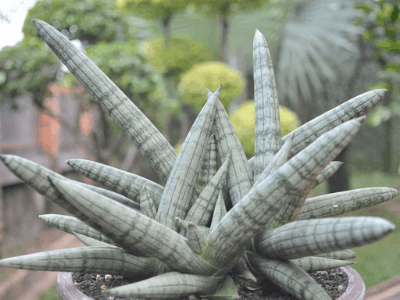
Sansevieria Cylindrica is known commonly as Sansevieria Boncel or Sansevieria Starfish…
The specific shape of its foliage will remind you of a starfish…
It is one of the best architectural decor plants since its leaves are thick, stubby and short…
This plant can be kept inside as a great ornamental plant…
Boncel is a miniature Sansevieria Patula hybrid that has leaves up to seven feet long…
However, the starfish snake plant only grows up to a foot in height…
A Boncel cultivar has thick, fleshy leaves that are stiff and zigzag with pale greenish gray horizontal zigzag lines…
… and darker green stripes running down the length of each leaf.
In the beginning, the leaves spread out alternately and also form a starfish-like appearance…
There can be more leaves or fewer leaves. But like a starfish, it grows from the base in this way…
Care and Maintenance
Sansevieria boncel is light sensitive.
Place Sansevieria as an indoor ornamental plant in a location with filtered bright light.
Sansevieria cylindrica thrives in north-facing windows or sheer-curtained windows.
It will also be able to grow in lower light conditions,..
…but the colors will be less vibrant, and it will not flower properly.
When growing Mother in Law plants outside, it is best to place them in a partially shaded..,
…bright light location, but they will grow in full direct sunlight as well.
Some shade will help cylindrical leaves grow more upright for a more attractive appearance.
Sansevieria thrives in temperatures ranging from 65° to 80° Fahrenheit.
It can withstand fluctuations in room temperature,..
..but anything below 50° F may be too much for the plant.
While Sansevieria cylindrica can tolerate dry air, too much of it can be harmful.
Take care not to put it too close to any air vents or drafts.
This drought-tolerant plant does not require much water.
While Cylindrica is growing, water thoroughly and allow the potting mixture…
…to almost dry out before watering again.
You can wait even longer before watering a plant once it has established itself.
Once every two weeks should suffice.
Overwatering can result in root rot and yellowing of the leaves.
Furthermore, getting too much water on the leaves can cause them to stop growing.
Likewise, this plant does not require a lot of fertilizer.
A monthly application of diluted liquid fertilizer (half strength) during the growing season is sufficient.
During the winter, plants do not require feeding.
It is best to under-fertilize your plants, as with all Sansevieria species.
For this plant, fast-draining potting soil is preferred. Sandy soil or good cactus soil are ideal.
Regular potting soils frequently retain too much water to be effective…
…unless some drainage is added. Snake plants do not thrive in wet soil.
Only transplant when the plants are overcrowded and need to be divided.
Large clay pots have been known to be broken by the root systems…
…of plants such as Sansevieria trifasciata.
Plants will not need to be replanted for several years because the…
…cylindrica Sansevieria tolerates cramped conditions.
Transplanting is best done early in the spring. Use a pot with drainage holes at all times.
And last but not least…
Sansevieria Parva
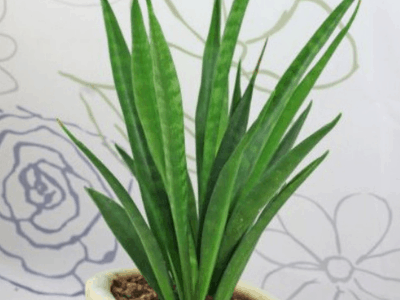
The Sansevieria Parva can be regarded as an excellent choice…
… for a plant with a great aroma which is compact and easy to grow.
This plant produces scented flowers that taste sweet and smells like hyacinth at night…
Another name for the species is Sansevieria Dooneri…
This snake plant can bloom regularly, unlike most snake plants…
… with small, creamy white flowers that are arranged vertically on the stalk.
Its leaves are flat and narrow, slightly bending downward to form a fountain-shaped foliage…
The plant reaches heights of 1 to 1.5 feet…
Although the leaves change from pale green to darker green as they mature…
… the pattern disappears as they become mature.
You can grow these plants in pots or in planters.
Care and Maintenance
They are hardy and can live in a variety of lighting conditions,..
..but prefer moderately bright, indirect light.
When growing indoors, a north-facing window or a bright…
…sunny window with a sheer curtain is ideal.
They can grow in the shade, but bright light helps bring out the colors in the leaves..,
…so keep them out of direct sunlight.
If it is too strong, the leaves will become weak and elongated, and the edges will turn yellow.
They thrive in temperatures ranging from 70 to 90 degrees Fahrenheit (21 to 32 degrees Celsius).
Temperatures below 50 °F (10 °C) cause the plants to suffer and die.
Sansevierias, in general, do not require a lot of water.
Watering too frequently will cause root rot and eventually kill the plants.
They also thrive in conditions of moderate to low humidity.
When the soil is completely dry, water it.
Allow the excess to drain through the drainage holes and discard in the saucer.
Reduce your watering during the winter.
Sansevieria parva requires a well-drained succulent mix with a pH of 5-7.5 that is slightly acidic to neutral.
It, like most snake plants, does not require much fertilizer.
Overfertilization will kill the leaves.
When the plant begins to flower in the summer, you can feed it with…
…a succulent fertilizer once every three weeks.
Dilute the fertilizer to half its original strength, as specified on the container.
Sum Up
An amazing beginner’s pick, snake plants are hardy and easy to maintain…
The plants are easy to grow indoors without much effort and without requiring a lot of skills…
Read on the second part of the varieties here…
Conclusion
If you still have any questions or suggestion on this matter…
Let us know in the comments below…
Or contact us for personal engagements…
Check out more posts on our website like this one here!
Have an awesome gardening journey!
Frequently Asked Questions Around Mini Snake Plant
How do you take care of a mini snake plant?
Mini snake plants are generally easy to take care of, but there are a few things…
…that you should remember in order to keep them healthy.
One important thing to note is that mini snake plants like partial shade…
…and moderate humidity levels.
If they don’t have enough light or humidity, they may become stunted and develop discoloured leaves.
Make sure their soil isn’t too wet or dry – give it a little bit of water every day,
..but do not overwater them.
Finally, ensure their exposure to direct sunlight is limited since this…
…can cause sunburned tips and other damage.
How big does a mini snake plant get?
Mini snake plants are typically smaller than regular-sized snake plants..,
…growing up to about 12 inches in height.
They do well in a variety of soils and can be propagated from cuttings…
…taken during the spring or summer months.

